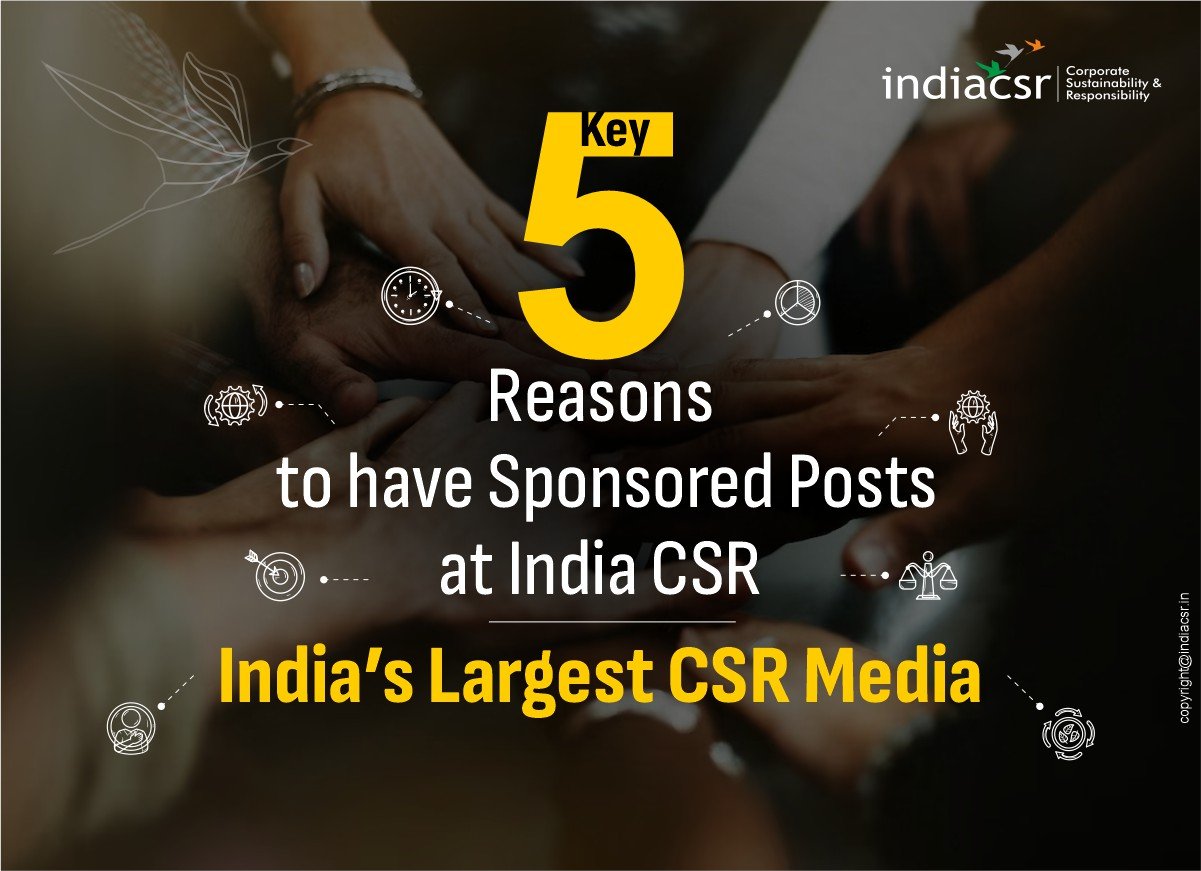Mitigation Measures Could Bring Benefits Worth over $160 Billion Annually Across Diverse Economic Sectors
INDIACSR News Network
WARSAW: Emissions of nitrous oxide (N2O), an often-overlooked yet potent gas, could nearly double by 2050 and thus potentially undermine gains in the ozone layer recovery and exacerbate climate change.
Drawing Down N2O to Protect Climate and the Ozone Layer, a new report by the UN Environment Programme (UNEP), warns that nitrous oxide is now the most important ozone-depleting emission and the third most potent greenhouse gas released into the atmosphere.
 While N2O exists naturally in the atmosphere in trace amounts, human activities have increased its concentrations since the industrial revolution.
While N2O exists naturally in the atmosphere in trace amounts, human activities have increased its concentrations since the industrial revolution.
The UNEP report, produced in conjunction with scientists and experts from more than 35 organizations, points out that with determination and commitment to act it is possible to draw down nitrous oxide emissions.
Reducing N2O emissions has major cost benefits since emissions are connected to diverse economic sectors from agriculture, chemical manufacturing and electricity production to waste management, transportation and fish production.
Gains from emissions reduction will include increased crop and livestock productivity, poverty alleviation, improved human health and reduced environmental degradation.
An earlier study quoted by the report indicated that an across-the-board improvement in nitrogen use efficiency of 20 per cent would cost around US$12 billion annually, but would save around US$23 billion in annual fertilizer costs alone.
Additional environmental, climate and human benefits could be worth an estimated US$160 billion per annum.
“We need all hands on deck to combat the serious and significant increases in N2O levels in the atmosphere”, said UN Under-Secretary-General and UNEP Executive Director Achim Steiner. “UNEP is working on a range of fronts to support the international efforts under the UN Climate Convention, from catalyzing the uptake of renewable energies and energy efficiency to adaptation projects in many parts of the globe.”
“In addition UNEP is working through a myriad of voluntary pathways from accelerating the policy switches towards an inclusive, resource-efficient green economy to the Climate and Clean Air Coalition to reduce emissions of climate pollutants such as hydroflourocarbons (HFCs), methane and black carbon,” said Mr Steiner.
“Although not as prevalent in the atmosphere as CO2 in terms of mass, N2O – commonly known to many as ‘laughing gas’ – is far from a laughing matter in respect to climate and ozone damage as it has a disproportionate impact on global warming because of its radiative properties and long lifetime in the atmosphere, which is 120 years on average. Action on these emissions offer yet another opportunity to keep the world under a 2 degree C temperature rise,” he added.
Most of the depletion of the stratospheric ozone layer up to now has been due to the infamous Chlorofluorocarbons (CFCs) and other halogenated (chlorine- and bromine-containing) chemicals.
However, these chemicals – unlike N2O – are now widely controlled by the Montreal Protocol, an international Treaty designed to protect the ozone layer.
Agriculture is by far the largest source of human-induced N2O emissions, accounting for two-thirds of these emissions. Meanwhile, other important sources of N2O include industry and fossil fuel combustion, biomass burning and wastewater.
The report lists specific, actionable measures that can be taken in each of these areas.
Agricultural Emissions
Emissions can be reduced by boosting the overall nitrogen use efficiency of agriculture. This means improving the ability of crops and livestock to better utilize nitrogen, and minimizing the loss of nitrogen to the environment that occurs during crop cultivation and animal production.
Other options for reducing agricultural emissions of N2O include reducing excessive meat consumption – as the production of animal protein leads to higher N2O emissions than plant protein – and reducing food waste and loss.
As a considerable percentage of food produced is either lost or wasted, avoiding such wastage could reduce the amount of food that needs to be produced and, therefore, the emissions associated with its production. UNEP, through its joint campaign with the FAO, Think.Eat.Save: Reduce Your Foodprint, is working to reduce food waste.
Controlling Emissions from the Industrial Sector
The report suggests that significant gains can be achieved by controlling emissions from just two chemical industries – adipic acid and nitric acid – which account for about 5 per cent of global N2O emissions.
Such reductions can be achieved by installing emissions control equipment in facilities producing such chemicals.
Reducing Emissions from Biomass Burning
In the area of biomass burning, the report notes that N2O emissions from landscape fires can be achieved by reducing the use of fires for forest clearing and implementing prescribed burning to reduce the amount of burnable vegetation in natural fires.
Improving the fuel and combustion efficiency of stoves can reduce emissions from biomass-burning in household stoves.
Wastewater and Aquaculture
Interventions in the collection and treatment of wastewater can reduce N2O emissions to the atmosphere.
These include, in particular, lowering the nitrogen content of discharge wastewater through improved wastewater treatment, reducing wastewater leakage from sewage piping, and recycling nutrients in wastewater as fertilizer.
Emissions from aquaculture can be lowered by boosting overall nitrogen use efficiency, and by implementing fish farming systems that reduce the amount of waste generated, or by treating effluents from fish ponds.
N2O Mitigation Scenarios
The report assesses four different sets of scenarios that correspond to different levels of potential N2O mitigation:
Under the business-as-usual scenarios, with little or no mitigation, levels of N2O could increase on average by 83 per cent between 2005 and 2050;
The moderate mitigation scenarios have emissions that increase but more slowly than business-as-usual. Under these scenarios, levels of N2O could increase on the average by 26 per cent between 2005 and 2050;
Under the concerted mitigation scenarios, N2O emission levels could be 22 per cent lower in 2050 than in 2005.
A reduction in N2O levels, as seen in the concerted mitigation scenarios, will not only help to protect the ozone layer and bring climate benefits, but also have many other co-benefits.
Reducing N2O emissions will help protect the ozone layer
Rising levels of N2O may undermine the gains in ozone layer recovery achieved by drawing down CFC and other ozone depleting substances. Reducing emissions will help avoid the continued depletion of the ozone layer and secure the gains made by the Montreal Protocol.
Emissions to be avoided by the concerted mitigation scenarios between 2013 and 2050 are of comparable magnitude to the 1550 to 2350 kilotonnes of ozone depletion potential of CFCs estimated to be locked up in the stocks of old refrigerators, air conditioners, insulation foams, and other units that have already been manufactured and used, but not yet released to the atmosphere.
Climate Benefits
According to the UNEP Emissions Gap Report 2013, there will be an “emissions gap” of around 8 to 12 gigatonnes of CO2 equivalent (GtCO2eq) in 2020. Drawing down N2O can make a significant contribution to narrowing this gap.
The potential to reduce N2O emissions in 2020 is around 1.8 Tg N2O-N/yr. In units of equivalent CO2 emissions, this is about 0.8 GtCO2eq/yr, which is around 8 per cent of the emissions gap.
Moreover, continued N2O emissions will worsen anthropogenic climate change and the effects will persist for a century or longer even when emissions are reduced in the future.
Overcoming Barriers
Cost, capacity building, technology transfer, and the lack of know-how are among the barriers to implementing N2O reduction strategies at a global scale.
Possible actions to overcome such barriers involve a combination of regulatory, financial and voluntary approaches.
These include:
Removing subsidies that encourage the overuse or misuse of nitrogen fertilizer and other products, while providing incentives for adopting best management practices that would improve nitrogen use efficiency;
Putting a price tag on nitrogen pollution through appropriate levies, incentives and tradable permits;
Encouraging research and development geared towards the development of innovative techniques to enhance nitrogen use efficiency as well as increased crop and animal productivity in agriculture and other sectors;
Increasing support for good nutrient management practices in crop and livestock operations through education, extension and outreach, especially to farmers in developing countries;
Setting clear targets for N2O emission reductions and for improving nitrogen use efficiency, and putting in place strategies for tracking progress.
The full report can be downloaded at



















